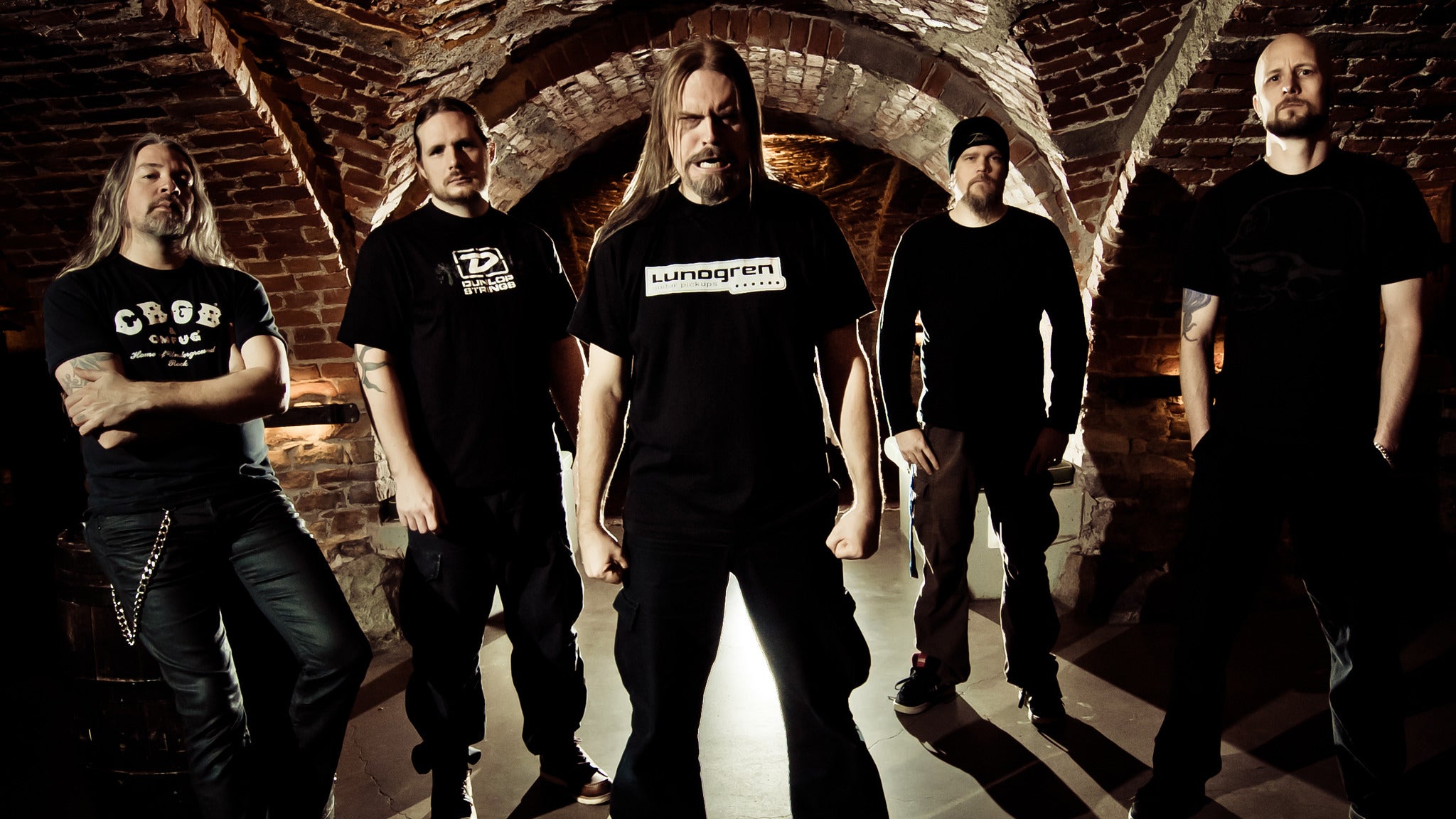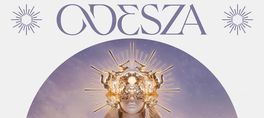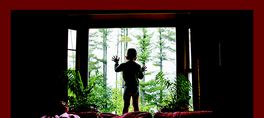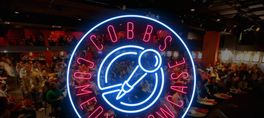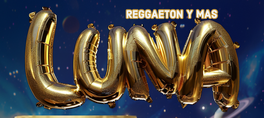Formed in the college town of Umeå in northern Sweden in 1987, MESHUGGAH have spent the last twenty years and cumulative thirteen releases developing, exploring, and redefining their complex, inimitable approach on the art of expressing the music they hear in their heads. A group that has not sounded like anyone else in over seventeen years, MESHUGGAH are one of the few purely and honestly lateral-thinking forces genuinely dedicated to pushing the boundaries of extreme music simply because doing so comes naturally to them. Unafraid to take risks and tackle new experiences, they create albums you can listen to a decade later and discover things you never noticed before. The mystical lore surrounding them pertains to the musical calculus of their odd-cycle time signatures shifting around common 4/4 time; therefore, it isn't shocking to see some of metal's biggest names standing in the wings at MESHUGGAH shows, shaking their heads at the band's down-tuned, groove-laden, and precisely performed polyrhythms that never veer out of control. Devotees include Tool, The Deftones, Kirk Hammett & Robert Trujillo of Metallica, Rob Halford of Judas Priest, and John Petrucci of Dream Theater. Boston's prestigious Berklee College of Music and Hollywood's Musicians Institute both incorporate MESHUGGAH's back catalogue into their curriculum because it is such a crucial element in any modern musical education. The band's humble, self-assured beginnings could have never guessed their music would lead Rolling Stone magazine to rank MESHUGGAH as one of music's "10 Most Important Hard and Heavy Bands" or that they'd create a sonic legacy equivalent to Stephen Hawking's contributions to theoretical physics.
In 1989, with a line-up that included Jens Kidman on vocals & guitar, Fredrik Thordendal on guitar, Peter Nordin on bass, and Niklas Lundgren on drums, MESHUGGAH's self-titled thrashy, virgin release (which came to be known as Psykisk Testbild due to the album's artwork) was self-released on vinyl and limited to 1,000 copies. Every copy sold. In 1991, their full-length debut album, Contradictions Collapse, heralded the arrival of drummer extraordinaire Tomas Haake and the band's obvious nod to vintage Metallica was a potent indicator of the barely-contained violence fermenting within. But it was in 1995 - a significant year for Sweden in terms of influential releases - that the myth of MESHUGGAH gained momentum. Produced by a 21-year old Daniel Bergstrand at Soundfront Studios in Uppsala, Sweden and consisting of equal parts instinct, inspiration, and natural talent, Destroy Erase Improve provided positive proof that the band had tapped a truly multi-dimensional, divergent vein. Joined by rhythm guitarist Mårten Hagström in 1994 for the recording of the None EP (freeing Kidman from those duties) and marking the beginning of the band's own identity, DEI was released to the sound of dropping jaws among their growing number of fervent followers and was a literal showcase of how far the band could push their ideas. Subsequently, it has been lauded as one of heavy metal's most masterfully evolutionary albums and hailed as MESHUGGAH's finest hour. Drum! Magazine praised it for its "ridiculous, driving, brutal insanity." Ranking #12 in Revolver Magazine's "69 Greatest Hard Rock Albums Of All Time," it recently became the 21st album inaugurated into Decibel Magazine's pantheon of extreme metal - The Hall of Fame: "These mad scientists have obliterated the existing paradigms of death, thrash, and prog metal, upping the ante for heavy music to a level of mathematical profundity. A mind-bending masterpiece."
When Peter Nordin developed an inner-ear nerve problem in 1995 that prevented him to continue with the group, MESHUGGAH recruited Gustaf Hielm to take over bass duties on 1997's The True Human Design EP and 1998's Chaosphere. The latter's manic, bludgeoning rage collided head-on with blistering skill ("five technically virtuosic Scandinavian ogres using jackhammers to smash other jackhammers" cited Spin Magazine), and the result was a masterclass in aggression. In 1999, MESHUGGAH performed at the Milwaukee Metal Fest, played a week of dates with Cannibal Corpse, toured supporting Slayer, and were then hand-picked to play eleven shows as direct support for Tool's U.S. arena tour in 2001. In a serendipitous, Hollywood-styled turn of events, music from Destroy Erase Improve aired during prime time television on MTV's reality series The Osbournes courtesy of Jack Osbourne to torment a neighbor's obviously weaker musical constitution. While the Swedes prided themselves in not being a commercially accessible band, they were invited to be featured guests on Ozzfest 2002's 2nd Stage. MESHUGGAH accepted, and the race was on to complete the new album.
After pushing the limits of heaviness with Chaosphere, there was only one place left to go: even heavier. Thordendal & Hagström made the leap to custom built 8-string guitars and thereby inherited a new musical vocabulary to work with. Abandoning the use of chords and almost exclusively utilizing single notes and slowing their pace to sub-aquatic meanderings, the subdued result was a lethal dose of self-professed "concentrated evil," Morse-code solos courtesy of Thordendal, and a lot of low-end. Completed just two days prior to the band leaving Sweden to join Ozzfest, the darker, more sinister, and all-encompassing menacing vibe of Nothing was doused in accolades. "The magnum opus of controlled insanity," wrote Terrorizer. "One of the most inventive metal albums to arrive in some time," praised Guitar One. "Nothing," boasted Tool drummer Danny Carey, "is another prime example of MESHUGGAH's musical expertise and unique compositional style that continues to evolve and change the way people listen to music." In light of the showers of praise, the Swedes were still not prepared when news broke of Nothing landing on the American Billboard Top 200 chart - one of the most extreme albums ever to achieve that feat at the time. Following their participation on Ozzfest, MESHUGGAH once again hit the road with Tool, and sold over 110,000 copies of their fourth full-length recording.
It would be three years before the next studio album surfaced, but in the interim, kudos for the band kept coming. In 2004, Alternative Press voted MESHUGGAH "The #1 Most Important Band In Metal. MESHUGGAH have carved out their own niche as one of the most innovative and challenging extreme acts of our generation." That same year, Fredrik & Mårten ranked #35 in Guitar World's list of "100 Greatest Metal Guitarists." "Over the polyrhythmic percussive madness of drummer Tomas Haake, Hagström & Thordendal create crushing, machine-gun riffs that are convoluted rhythms in themselves, as well as fluid, sublime, Allan Holdsworth-style solos."
Such furiously mesmerizing music obviously requires its share of discipline. Each year without a release became inversely proportional to the climbing expectations among MESHUGGAH fans for the band to out-do themselves. Tackling a dark musical landscape while addressing the subjects of contradiction, paradox, negation, and the clashing of opposites with all the tension that results from it, MESHUGGAH's studio offering for 2005 was a 47 minute-long "uni-song" divided into four quasi-movements (or thirteen suites, depending on your personal interpretation). An audio exam in patience and endurance, Catch Thirty Three offered a reward only to those who were insistent on completing the journey through this warped, metaphoric dream state. Obviously mastering the 8-string guitars that were prototypes on the previous album, MESHUGGAH tapped into the hypnotic power of repetition, suggesting a lot of visual imagery and movement. Proudly cold and emotionless, this "concept album without a concept" with seemingly stream-of-consciousness vocals had the feel of a philosophical journey through life and death, not excluding the soul-gutting ponderings. Again, the praise was incessant. "Catch Thirty Three could be the soundtrack to the darkest, strangest, heaviest movie never made," held Revolver. "Catch Thirty Three lifts MESHUGGAH's work to unreachable levels," commended Guitar World. "One of the most brilliant metal discs in recent years," raved Guitar One. It went on to become Terrorizer Magazine's Album of the Year for 2005. What's more, while the band's discography underwent scholarly analysis at the 34th Annual Meeting of The Music Theory Society of New York State in 2006, MESHUGGAH re-mixed and re-mastered Nothing at their own Fear And Loathing Studio in Stockholm, Sweden and re-offered it to fans sounding "the way we always wanted it to!" In the latter half of 2007, the article "Re-casting Metal: Rhythm and Meter in the Music of MESHUGGAH," appeared in a volume of Music Theory Spectrum, a North American journal of The Society for Music Theory.
The sonic detonation that was 2008's obZen debuted at #59 on the American Top 200 Billboard chart and clinched the #14 spot on the iTunes Top rock Albums chart. To date, the album that shook the foundations of convention has sold over 82,000 copies in the U.S. alone. The eccentric genius & abrupt ferocity intrinsic to MESHUGGAH's music was once again fueled by the percussive gymnastics of Tomas Haake, voted the year's Best Drummer by Blender Magazine. "He's so far ahead of the pack," they wrote, "it's unfair to even shackle him to metal anymore." Again, the praise poured in: "A thundershower of hammers raining from the sky," warned Guitar World. "A band at the top of a game they practically invented," praised Bass Player magazine. "Math-metal's undisputed champions," declared Revolver. "obZen dares any other metal band to write a more ferocious album," observed The Onion. Who better to rise to this challenge than the band themselves?
After releasing Alive in 2010, the first live DVD of the band's career which debuted at #8 on the Nielsen SoundScan Top Music DVD Video chart, MESHUGGAH have returned in 2012 with their contribution to the no-show apocalypse: the 10-track KOLOSS. This album - which features 3-D art by Luminokaya.com - not only preserves the band's long-time relationship with metric insanity, but rightly crowns the band as apex predators in a scene fraught with well-intentioned imitators whose aspirations will once again be deflated. "Truly, a band with no equal," declared Outburn Magazine. ModernDrummer.com called KOLOSS "an undiminished sense of power and complexity." SPIN.com hailed MESHUGGAH as "one of those rare bands you have to hear to believe."
With the highest chart debut & first-week sales of their career, MESHUGGAH roared into the American Billboard Top 200 Albums chart at #17 with 18,342 copies sold. In Canada, KOLOSS debuted at #24 on the Top 200 chart and at #4 on the Hard Music chart. Other Billboard chart action includes #2 on the Top Independent Albums chart, #3 on the Current Hard Music Albums chart, #3 on the Top Hard Music chart, #9 on the Current Rock chart, and #16 on the Top Current Albums chart. In Europe, the band experienced a career first on the German album chart: a debut at #48. Celebrating the band's two and a half decades of existence & deviance in 2014, MESHUGGAH will be performing a few select "25th Anniversary" shows in both Europe and North America.
In the realm inhabited by MESHUGGAH, it's clear that something incredible is always waiting to be known, to be shown. With an innate belief in their own curiosity and imagination, MESHUGGAH strive for complete understanding of their musical universe. By doing so, they stand as stark reminders of why humanity exists at all: to question what we know and to continually wonder at the life that surrounds us... which ultimately challenges us to defy the very limits of how far the human spirit can soar.
show less
In 1989, with a line-up that included Jens Kidman on vocals & guitar, Fredrik Thordendal on guitar, Peter Nordin on bass, and Niklas Lundgren on drums, MESHUGGAH's self-titled thrashy, virgin release (which came to be known as Psykisk Testbild due to the album's artwork) was self-released on vinyl and limited to 1,000 copies. Every copy sold. In 1991, their full-length debut album, Contradictions Collapse, heralded the arrival of drummer extraordinaire Tomas Haake and the band's obvious nod to vintage Metallica was a potent indicator of the barely-contained violence fermenting within. But it was in 1995 - a significant year for Sweden in terms of influential releases - that the myth of MESHUGGAH gained momentum. Produced by a 21-year old Daniel Bergstrand at Soundfront Studios in Uppsala, Sweden and consisting of equal parts instinct, inspiration, and natural talent, Destroy Erase Improve provided positive proof that the band had tapped a truly multi-dimensional, divergent vein. Joined by rhythm guitarist Mårten Hagström in 1994 for the recording of the None EP (freeing Kidman from those duties) and marking the beginning of the band's own identity, DEI was released to the sound of dropping jaws among their growing number of fervent followers and was a literal showcase of how far the band could push their ideas. Subsequently, it has been lauded as one of heavy metal's most masterfully evolutionary albums and hailed as MESHUGGAH's finest hour. Drum! Magazine praised it for its "ridiculous, driving, brutal insanity." Ranking #12 in Revolver Magazine's "69 Greatest Hard Rock Albums Of All Time," it recently became the 21st album inaugurated into Decibel Magazine's pantheon of extreme metal - The Hall of Fame: "These mad scientists have obliterated the existing paradigms of death, thrash, and prog metal, upping the ante for heavy music to a level of mathematical profundity. A mind-bending masterpiece."
When Peter Nordin developed an inner-ear nerve problem in 1995 that prevented him to continue with the group, MESHUGGAH recruited Gustaf Hielm to take over bass duties on 1997's The True Human Design EP and 1998's Chaosphere. The latter's manic, bludgeoning rage collided head-on with blistering skill ("five technically virtuosic Scandinavian ogres using jackhammers to smash other jackhammers" cited Spin Magazine), and the result was a masterclass in aggression. In 1999, MESHUGGAH performed at the Milwaukee Metal Fest, played a week of dates with Cannibal Corpse, toured supporting Slayer, and were then hand-picked to play eleven shows as direct support for Tool's U.S. arena tour in 2001. In a serendipitous, Hollywood-styled turn of events, music from Destroy Erase Improve aired during prime time television on MTV's reality series The Osbournes courtesy of Jack Osbourne to torment a neighbor's obviously weaker musical constitution. While the Swedes prided themselves in not being a commercially accessible band, they were invited to be featured guests on Ozzfest 2002's 2nd Stage. MESHUGGAH accepted, and the race was on to complete the new album.
After pushing the limits of heaviness with Chaosphere, there was only one place left to go: even heavier. Thordendal & Hagström made the leap to custom built 8-string guitars and thereby inherited a new musical vocabulary to work with. Abandoning the use of chords and almost exclusively utilizing single notes and slowing their pace to sub-aquatic meanderings, the subdued result was a lethal dose of self-professed "concentrated evil," Morse-code solos courtesy of Thordendal, and a lot of low-end. Completed just two days prior to the band leaving Sweden to join Ozzfest, the darker, more sinister, and all-encompassing menacing vibe of Nothing was doused in accolades. "The magnum opus of controlled insanity," wrote Terrorizer. "One of the most inventive metal albums to arrive in some time," praised Guitar One. "Nothing," boasted Tool drummer Danny Carey, "is another prime example of MESHUGGAH's musical expertise and unique compositional style that continues to evolve and change the way people listen to music." In light of the showers of praise, the Swedes were still not prepared when news broke of Nothing landing on the American Billboard Top 200 chart - one of the most extreme albums ever to achieve that feat at the time. Following their participation on Ozzfest, MESHUGGAH once again hit the road with Tool, and sold over 110,000 copies of their fourth full-length recording.
It would be three years before the next studio album surfaced, but in the interim, kudos for the band kept coming. In 2004, Alternative Press voted MESHUGGAH "The #1 Most Important Band In Metal. MESHUGGAH have carved out their own niche as one of the most innovative and challenging extreme acts of our generation." That same year, Fredrik & Mårten ranked #35 in Guitar World's list of "100 Greatest Metal Guitarists." "Over the polyrhythmic percussive madness of drummer Tomas Haake, Hagström & Thordendal create crushing, machine-gun riffs that are convoluted rhythms in themselves, as well as fluid, sublime, Allan Holdsworth-style solos."
Such furiously mesmerizing music obviously requires its share of discipline. Each year without a release became inversely proportional to the climbing expectations among MESHUGGAH fans for the band to out-do themselves. Tackling a dark musical landscape while addressing the subjects of contradiction, paradox, negation, and the clashing of opposites with all the tension that results from it, MESHUGGAH's studio offering for 2005 was a 47 minute-long "uni-song" divided into four quasi-movements (or thirteen suites, depending on your personal interpretation). An audio exam in patience and endurance, Catch Thirty Three offered a reward only to those who were insistent on completing the journey through this warped, metaphoric dream state. Obviously mastering the 8-string guitars that were prototypes on the previous album, MESHUGGAH tapped into the hypnotic power of repetition, suggesting a lot of visual imagery and movement. Proudly cold and emotionless, this "concept album without a concept" with seemingly stream-of-consciousness vocals had the feel of a philosophical journey through life and death, not excluding the soul-gutting ponderings. Again, the praise was incessant. "Catch Thirty Three could be the soundtrack to the darkest, strangest, heaviest movie never made," held Revolver. "Catch Thirty Three lifts MESHUGGAH's work to unreachable levels," commended Guitar World. "One of the most brilliant metal discs in recent years," raved Guitar One. It went on to become Terrorizer Magazine's Album of the Year for 2005. What's more, while the band's discography underwent scholarly analysis at the 34th Annual Meeting of The Music Theory Society of New York State in 2006, MESHUGGAH re-mixed and re-mastered Nothing at their own Fear And Loathing Studio in Stockholm, Sweden and re-offered it to fans sounding "the way we always wanted it to!" In the latter half of 2007, the article "Re-casting Metal: Rhythm and Meter in the Music of MESHUGGAH," appeared in a volume of Music Theory Spectrum, a North American journal of The Society for Music Theory.
The sonic detonation that was 2008's obZen debuted at #59 on the American Top 200 Billboard chart and clinched the #14 spot on the iTunes Top rock Albums chart. To date, the album that shook the foundations of convention has sold over 82,000 copies in the U.S. alone. The eccentric genius & abrupt ferocity intrinsic to MESHUGGAH's music was once again fueled by the percussive gymnastics of Tomas Haake, voted the year's Best Drummer by Blender Magazine. "He's so far ahead of the pack," they wrote, "it's unfair to even shackle him to metal anymore." Again, the praise poured in: "A thundershower of hammers raining from the sky," warned Guitar World. "A band at the top of a game they practically invented," praised Bass Player magazine. "Math-metal's undisputed champions," declared Revolver. "obZen dares any other metal band to write a more ferocious album," observed The Onion. Who better to rise to this challenge than the band themselves?
After releasing Alive in 2010, the first live DVD of the band's career which debuted at #8 on the Nielsen SoundScan Top Music DVD Video chart, MESHUGGAH have returned in 2012 with their contribution to the no-show apocalypse: the 10-track KOLOSS. This album - which features 3-D art by Luminokaya.com - not only preserves the band's long-time relationship with metric insanity, but rightly crowns the band as apex predators in a scene fraught with well-intentioned imitators whose aspirations will once again be deflated. "Truly, a band with no equal," declared Outburn Magazine. ModernDrummer.com called KOLOSS "an undiminished sense of power and complexity." SPIN.com hailed MESHUGGAH as "one of those rare bands you have to hear to believe."
With the highest chart debut & first-week sales of their career, MESHUGGAH roared into the American Billboard Top 200 Albums chart at #17 with 18,342 copies sold. In Canada, KOLOSS debuted at #24 on the Top 200 chart and at #4 on the Hard Music chart. Other Billboard chart action includes #2 on the Top Independent Albums chart, #3 on the Current Hard Music Albums chart, #3 on the Top Hard Music chart, #9 on the Current Rock chart, and #16 on the Top Current Albums chart. In Europe, the band experienced a career first on the German album chart: a debut at #48. Celebrating the band's two and a half decades of existence & deviance in 2014, MESHUGGAH will be performing a few select "25th Anniversary" shows in both Europe and North America.
In the realm inhabited by MESHUGGAH, it's clear that something incredible is always waiting to be known, to be shown. With an innate belief in their own curiosity and imagination, MESHUGGAH strive for complete understanding of their musical universe. By doing so, they stand as stark reminders of why humanity exists at all: to question what we know and to continually wonder at the life that surrounds us... which ultimately challenges us to defy the very limits of how far the human spirit can soar.
Formed in the college town of Umeå in northern Sweden in 1987, MESHUGGAH have spent the last twenty years and cumulative thirteen releases developing, exploring, and redefining their complex, inimitable approach on the art of expressing the music they hear in their heads. A group that has not sounded like anyone else in over seventeen years, MESHUGGAH are one of the few purely and honestly lateral-thinking forces genuinely dedicated to pushing the boundaries of extreme music simply because doing so comes naturally to them. Unafraid to take risks and tackle new experiences, they create albums you can listen to a decade later and discover things you never noticed before. The mystical lore surrounding them pertains to the musical calculus of their odd-cycle time signatures shifting around common 4/4 time; therefore, it isn't shocking to see some of metal's biggest names standing in the wings at MESHUGGAH shows, shaking their heads at the band's down-tuned, groove-laden, and precisely performed polyrhythms that never veer out of control. Devotees include Tool, The Deftones, Kirk Hammett & Robert Trujillo of Metallica, Rob Halford of Judas Priest, and John Petrucci of Dream Theater. Boston's prestigious Berklee College of Music and Hollywood's Musicians Institute both incorporate MESHUGGAH's back catalogue into their curriculum because it is such a crucial element in any modern musical education. The band's humble, self-assured beginnings could have never guessed their music would lead Rolling Stone magazine to rank MESHUGGAH as one of music's "10 Most Important Hard and Heavy Bands" or that they'd create a sonic legacy equivalent to Stephen Hawking's contributions to theoretical physics.
In 1989, with a line-up that included Jens Kidman on vocals & guitar, Fredrik Thordendal on guitar, Peter Nordin on bass, and Niklas Lundgren on drums, MESHUGGAH's self-titled thrashy, virgin release (which came to be known as Psykisk Testbild due to the album's artwork) was self-released on vinyl and limited to 1,000 copies. Every copy sold. In 1991, their full-length debut album, Contradictions Collapse, heralded the arrival of drummer extraordinaire Tomas Haake and the band's obvious nod to vintage Metallica was a potent indicator of the barely-contained violence fermenting within. But it was in 1995 - a significant year for Sweden in terms of influential releases - that the myth of MESHUGGAH gained momentum. Produced by a 21-year old Daniel Bergstrand at Soundfront Studios in Uppsala, Sweden and consisting of equal parts instinct, inspiration, and natural talent, Destroy Erase Improve provided positive proof that the band had tapped a truly multi-dimensional, divergent vein. Joined by rhythm guitarist Mårten Hagström in 1994 for the recording of the None EP (freeing Kidman from those duties) and marking the beginning of the band's own identity, DEI was released to the sound of dropping jaws among their growing number of fervent followers and was a literal showcase of how far the band could push their ideas. Subsequently, it has been lauded as one of heavy metal's most masterfully evolutionary albums and hailed as MESHUGGAH's finest hour. Drum! Magazine praised it for its "ridiculous, driving, brutal insanity." Ranking #12 in Revolver Magazine's "69 Greatest Hard Rock Albums Of All Time," it recently became the 21st album inaugurated into Decibel Magazine's pantheon of extreme metal - The Hall of Fame: "These mad scientists have obliterated the existing paradigms of death, thrash, and prog metal, upping the ante for heavy music to a level of mathematical profundity. A mind-bending masterpiece."
When Peter Nordin developed an inner-ear nerve problem in 1995 that prevented him to continue with the group, MESHUGGAH recruited Gustaf Hielm to take over bass duties on 1997's The True Human Design EP and 1998's Chaosphere. The latter's manic, bludgeoning rage collided head-on with blistering skill ("five technically virtuosic Scandinavian ogres using jackhammers to smash other jackhammers" cited Spin Magazine), and the result was a masterclass in aggression. In 1999, MESHUGGAH performed at the Milwaukee Metal Fest, played a week of dates with Cannibal Corpse, toured supporting Slayer, and were then hand-picked to play eleven shows as direct support for Tool's U.S. arena tour in 2001. In a serendipitous, Hollywood-styled turn of events, music from Destroy Erase Improve aired during prime time television on MTV's reality series The Osbournes courtesy of Jack Osbourne to torment a neighbor's obviously weaker musical constitution. While the Swedes prided themselves in not being a commercially accessible band, they were invited to be featured guests on Ozzfest 2002's 2nd Stage. MESHUGGAH accepted, and the race was on to complete the new album.
After pushing the limits of heaviness with Chaosphere, there was only one place left to go: even heavier. Thordendal & Hagström made the leap to custom built 8-string guitars and thereby inherited a new musical vocabulary to work with. Abandoning the use of chords and almost exclusively utilizing single notes and slowing their pace to sub-aquatic meanderings, the subdued result was a lethal dose of self-professed "concentrated evil," Morse-code solos courtesy of Thordendal, and a lot of low-end. Completed just two days prior to the band leaving Sweden to join Ozzfest, the darker, more sinister, and all-encompassing menacing vibe of Nothing was doused in accolades. "The magnum opus of controlled insanity," wrote Terrorizer. "One of the most inventive metal albums to arrive in some time," praised Guitar One. "Nothing," boasted Tool drummer Danny Carey, "is another prime example of MESHUGGAH's musical expertise and unique compositional style that continues to evolve and change the way people listen to music." In light of the showers of praise, the Swedes were still not prepared when news broke of Nothing landing on the American Billboard Top 200 chart - one of the most extreme albums ever to achieve that feat at the time. Following their participation on Ozzfest, MESHUGGAH once again hit the road with Tool, and sold over 110,000 copies of their fourth full-length recording.
It would be three years before the next studio album surfaced, but in the interim, kudos for the band kept coming. In 2004, Alternative Press voted MESHUGGAH "The #1 Most Important Band In Metal. MESHUGGAH have carved out their own niche as one of the most innovative and challenging extreme acts of our generation." That same year, Fredrik & Mårten ranked #35 in Guitar World's list of "100 Greatest Metal Guitarists." "Over the polyrhythmic percussive madness of drummer Tomas Haake, Hagström & Thordendal create crushing, machine-gun riffs that are convoluted rhythms in themselves, as well as fluid, sublime, Allan Holdsworth-style solos."
Such furiously mesmerizing music obviously requires its share of discipline. Each year without a release became inversely proportional to the climbing expectations among MESHUGGAH fans for the band to out-do themselves. Tackling a dark musical landscape while addressing the subjects of contradiction, paradox, negation, and the clashing of opposites with all the tension that results from it, MESHUGGAH's studio offering for 2005 was a 47 minute-long "uni-song" divided into four quasi-movements (or thirteen suites, depending on your personal interpretation). An audio exam in patience and endurance, Catch Thirty Three offered a reward only to those who were insistent on completing the journey through this warped, metaphoric dream state. Obviously mastering the 8-string guitars that were prototypes on the previous album, MESHUGGAH tapped into the hypnotic power of repetition, suggesting a lot of visual imagery and movement. Proudly cold and emotionless, this "concept album without a concept" with seemingly stream-of-consciousness vocals had the feel of a philosophical journey through life and death, not excluding the soul-gutting ponderings. Again, the praise was incessant. "Catch Thirty Three could be the soundtrack to the darkest, strangest, heaviest movie never made," held Revolver. "Catch Thirty Three lifts MESHUGGAH's work to unreachable levels," commended Guitar World. "One of the most brilliant metal discs in recent years," raved Guitar One. It went on to become Terrorizer Magazine's Album of the Year for 2005. What's more, while the band's discography underwent scholarly analysis at the 34th Annual Meeting of The Music Theory Society of New York State in 2006, MESHUGGAH re-mixed and re-mastered Nothing at their own Fear And Loathing Studio in Stockholm, Sweden and re-offered it to fans sounding "the way we always wanted it to!" In the latter half of 2007, the article "Re-casting Metal: Rhythm and Meter in the Music of MESHUGGAH," appeared in a volume of Music Theory Spectrum, a North American journal of The Society for Music Theory.
The sonic detonation that was 2008's obZen debuted at #59 on the American Top 200 Billboard chart and clinched the #14 spot on the iTunes Top rock Albums chart. To date, the album that shook the foundations of convention has sold over 82,000 copies in the U.S. alone. The eccentric genius & abrupt ferocity intrinsic to MESHUGGAH's music was once again fueled by the percussive gymnastics of Tomas Haake, voted the year's Best Drummer by Blender Magazine. "He's so far ahead of the pack," they wrote, "it's unfair to even shackle him to metal anymore." Again, the praise poured in: "A thundershower of hammers raining from the sky," warned Guitar World. "A band at the top of a game they practically invented," praised Bass Player magazine. "Math-metal's undisputed champions," declared Revolver. "obZen dares any other metal band to write a more ferocious album," observed The Onion. Who better to rise to this challenge than the band themselves?
After releasing Alive in 2010, the first live DVD of the band's career which debuted at #8 on the Nielsen SoundScan Top Music DVD Video chart, MESHUGGAH have returned in 2012 with their contribution to the no-show apocalypse: the 10-track KOLOSS. This album - which features 3-D art by Luminokaya.com - not only preserves the band's long-time relationship with metric insanity, but rightly crowns the band as apex predators in a scene fraught with well-intentioned imitators whose aspirations will once again be deflated. "Truly, a band with no equal," declared Outburn Magazine. ModernDrummer.com called KOLOSS "an undiminished sense of power and complexity." SPIN.com hailed MESHUGGAH as "one of those rare bands you have to hear to believe."
With the highest chart debut & first-week sales of their career, MESHUGGAH roared into the American Billboard Top 200 Albums chart at #17 with 18,342 copies sold. In Canada, KOLOSS debuted at #24 on the Top 200 chart and at #4 on the Hard Music chart. Other Billboard chart action includes #2 on the Top Independent Albums chart, #3 on the Current Hard Music Albums chart, #3 on the Top Hard Music chart, #9 on the Current Rock chart, and #16 on the Top Current Albums chart. In Europe, the band experienced a career first on the German album chart: a debut at #48. Celebrating the band's two and a half decades of existence & deviance in 2014, MESHUGGAH will be performing a few select "25th Anniversary" shows in both Europe and North America.
In the realm inhabited by MESHUGGAH, it's clear that something incredible is always waiting to be known, to be shown. With an innate belief in their own curiosity and imagination, MESHUGGAH strive for complete understanding of their musical universe. By doing so, they stand as stark reminders of why humanity exists at all: to question what we know and to continually wonder at the life that surrounds us... which ultimately challenges us to defy the very limits of how far the human spirit can soar.
read more
In 1989, with a line-up that included Jens Kidman on vocals & guitar, Fredrik Thordendal on guitar, Peter Nordin on bass, and Niklas Lundgren on drums, MESHUGGAH's self-titled thrashy, virgin release (which came to be known as Psykisk Testbild due to the album's artwork) was self-released on vinyl and limited to 1,000 copies. Every copy sold. In 1991, their full-length debut album, Contradictions Collapse, heralded the arrival of drummer extraordinaire Tomas Haake and the band's obvious nod to vintage Metallica was a potent indicator of the barely-contained violence fermenting within. But it was in 1995 - a significant year for Sweden in terms of influential releases - that the myth of MESHUGGAH gained momentum. Produced by a 21-year old Daniel Bergstrand at Soundfront Studios in Uppsala, Sweden and consisting of equal parts instinct, inspiration, and natural talent, Destroy Erase Improve provided positive proof that the band had tapped a truly multi-dimensional, divergent vein. Joined by rhythm guitarist Mårten Hagström in 1994 for the recording of the None EP (freeing Kidman from those duties) and marking the beginning of the band's own identity, DEI was released to the sound of dropping jaws among their growing number of fervent followers and was a literal showcase of how far the band could push their ideas. Subsequently, it has been lauded as one of heavy metal's most masterfully evolutionary albums and hailed as MESHUGGAH's finest hour. Drum! Magazine praised it for its "ridiculous, driving, brutal insanity." Ranking #12 in Revolver Magazine's "69 Greatest Hard Rock Albums Of All Time," it recently became the 21st album inaugurated into Decibel Magazine's pantheon of extreme metal - The Hall of Fame: "These mad scientists have obliterated the existing paradigms of death, thrash, and prog metal, upping the ante for heavy music to a level of mathematical profundity. A mind-bending masterpiece."
When Peter Nordin developed an inner-ear nerve problem in 1995 that prevented him to continue with the group, MESHUGGAH recruited Gustaf Hielm to take over bass duties on 1997's The True Human Design EP and 1998's Chaosphere. The latter's manic, bludgeoning rage collided head-on with blistering skill ("five technically virtuosic Scandinavian ogres using jackhammers to smash other jackhammers" cited Spin Magazine), and the result was a masterclass in aggression. In 1999, MESHUGGAH performed at the Milwaukee Metal Fest, played a week of dates with Cannibal Corpse, toured supporting Slayer, and were then hand-picked to play eleven shows as direct support for Tool's U.S. arena tour in 2001. In a serendipitous, Hollywood-styled turn of events, music from Destroy Erase Improve aired during prime time television on MTV's reality series The Osbournes courtesy of Jack Osbourne to torment a neighbor's obviously weaker musical constitution. While the Swedes prided themselves in not being a commercially accessible band, they were invited to be featured guests on Ozzfest 2002's 2nd Stage. MESHUGGAH accepted, and the race was on to complete the new album.
After pushing the limits of heaviness with Chaosphere, there was only one place left to go: even heavier. Thordendal & Hagström made the leap to custom built 8-string guitars and thereby inherited a new musical vocabulary to work with. Abandoning the use of chords and almost exclusively utilizing single notes and slowing their pace to sub-aquatic meanderings, the subdued result was a lethal dose of self-professed "concentrated evil," Morse-code solos courtesy of Thordendal, and a lot of low-end. Completed just two days prior to the band leaving Sweden to join Ozzfest, the darker, more sinister, and all-encompassing menacing vibe of Nothing was doused in accolades. "The magnum opus of controlled insanity," wrote Terrorizer. "One of the most inventive metal albums to arrive in some time," praised Guitar One. "Nothing," boasted Tool drummer Danny Carey, "is another prime example of MESHUGGAH's musical expertise and unique compositional style that continues to evolve and change the way people listen to music." In light of the showers of praise, the Swedes were still not prepared when news broke of Nothing landing on the American Billboard Top 200 chart - one of the most extreme albums ever to achieve that feat at the time. Following their participation on Ozzfest, MESHUGGAH once again hit the road with Tool, and sold over 110,000 copies of their fourth full-length recording.
It would be three years before the next studio album surfaced, but in the interim, kudos for the band kept coming. In 2004, Alternative Press voted MESHUGGAH "The #1 Most Important Band In Metal. MESHUGGAH have carved out their own niche as one of the most innovative and challenging extreme acts of our generation." That same year, Fredrik & Mårten ranked #35 in Guitar World's list of "100 Greatest Metal Guitarists." "Over the polyrhythmic percussive madness of drummer Tomas Haake, Hagström & Thordendal create crushing, machine-gun riffs that are convoluted rhythms in themselves, as well as fluid, sublime, Allan Holdsworth-style solos."
Such furiously mesmerizing music obviously requires its share of discipline. Each year without a release became inversely proportional to the climbing expectations among MESHUGGAH fans for the band to out-do themselves. Tackling a dark musical landscape while addressing the subjects of contradiction, paradox, negation, and the clashing of opposites with all the tension that results from it, MESHUGGAH's studio offering for 2005 was a 47 minute-long "uni-song" divided into four quasi-movements (or thirteen suites, depending on your personal interpretation). An audio exam in patience and endurance, Catch Thirty Three offered a reward only to those who were insistent on completing the journey through this warped, metaphoric dream state. Obviously mastering the 8-string guitars that were prototypes on the previous album, MESHUGGAH tapped into the hypnotic power of repetition, suggesting a lot of visual imagery and movement. Proudly cold and emotionless, this "concept album without a concept" with seemingly stream-of-consciousness vocals had the feel of a philosophical journey through life and death, not excluding the soul-gutting ponderings. Again, the praise was incessant. "Catch Thirty Three could be the soundtrack to the darkest, strangest, heaviest movie never made," held Revolver. "Catch Thirty Three lifts MESHUGGAH's work to unreachable levels," commended Guitar World. "One of the most brilliant metal discs in recent years," raved Guitar One. It went on to become Terrorizer Magazine's Album of the Year for 2005. What's more, while the band's discography underwent scholarly analysis at the 34th Annual Meeting of The Music Theory Society of New York State in 2006, MESHUGGAH re-mixed and re-mastered Nothing at their own Fear And Loathing Studio in Stockholm, Sweden and re-offered it to fans sounding "the way we always wanted it to!" In the latter half of 2007, the article "Re-casting Metal: Rhythm and Meter in the Music of MESHUGGAH," appeared in a volume of Music Theory Spectrum, a North American journal of The Society for Music Theory.
The sonic detonation that was 2008's obZen debuted at #59 on the American Top 200 Billboard chart and clinched the #14 spot on the iTunes Top rock Albums chart. To date, the album that shook the foundations of convention has sold over 82,000 copies in the U.S. alone. The eccentric genius & abrupt ferocity intrinsic to MESHUGGAH's music was once again fueled by the percussive gymnastics of Tomas Haake, voted the year's Best Drummer by Blender Magazine. "He's so far ahead of the pack," they wrote, "it's unfair to even shackle him to metal anymore." Again, the praise poured in: "A thundershower of hammers raining from the sky," warned Guitar World. "A band at the top of a game they practically invented," praised Bass Player magazine. "Math-metal's undisputed champions," declared Revolver. "obZen dares any other metal band to write a more ferocious album," observed The Onion. Who better to rise to this challenge than the band themselves?
After releasing Alive in 2010, the first live DVD of the band's career which debuted at #8 on the Nielsen SoundScan Top Music DVD Video chart, MESHUGGAH have returned in 2012 with their contribution to the no-show apocalypse: the 10-track KOLOSS. This album - which features 3-D art by Luminokaya.com - not only preserves the band's long-time relationship with metric insanity, but rightly crowns the band as apex predators in a scene fraught with well-intentioned imitators whose aspirations will once again be deflated. "Truly, a band with no equal," declared Outburn Magazine. ModernDrummer.com called KOLOSS "an undiminished sense of power and complexity." SPIN.com hailed MESHUGGAH as "one of those rare bands you have to hear to believe."
With the highest chart debut & first-week sales of their career, MESHUGGAH roared into the American Billboard Top 200 Albums chart at #17 with 18,342 copies sold. In Canada, KOLOSS debuted at #24 on the Top 200 chart and at #4 on the Hard Music chart. Other Billboard chart action includes #2 on the Top Independent Albums chart, #3 on the Current Hard Music Albums chart, #3 on the Top Hard Music chart, #9 on the Current Rock chart, and #16 on the Top Current Albums chart. In Europe, the band experienced a career first on the German album chart: a debut at #48. Celebrating the band's two and a half decades of existence & deviance in 2014, MESHUGGAH will be performing a few select "25th Anniversary" shows in both Europe and North America.
In the realm inhabited by MESHUGGAH, it's clear that something incredible is always waiting to be known, to be shown. With an innate belief in their own curiosity and imagination, MESHUGGAH strive for complete understanding of their musical universe. By doing so, they stand as stark reminders of why humanity exists at all: to question what we know and to continually wonder at the life that surrounds us... which ultimately challenges us to defy the very limits of how far the human spirit can soar.
show less
Date/Times:
The Warfield
26 Upcoming Events
982 Market Street, San Francisco, CA 94102
The Best Events
Every Week in Your Inbox
From Our Sponsors
UPCOMING EVENTS
Great suggestion! We'll be in touch.
Event reviewed successfully.
